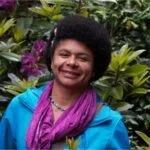School Life at James Baldwin
Welcome to James Baldwin Elementary School!

Mission: James Baldwin Elementary is a culturally responsive community working together toward educational excellence and justice for all students and families. We empower students to be community-minded critical thinkers who are successful academically, socially, and emotionally.
Vision: James Baldwin Elementary students will work toward creating more equitable, diverse, and inclusive communities. They will become global citizens with the skills to solve the complex challenges our world presents.
What makes James Baldwin special?
- Project based learning
- Special celebrations
- Student leadership
- All School events – Art Night, Math Night, Family Culture Night, Day of the Dead, Field Day, Ice Skating
- Field trips – Museums, Zoo, Science Center, Parks
- After School Programs – Boys and Girls Club, Parks and Recreation, Enrichment
- 5th Grade: overnight camp
James Baldwin School Tour
Please watch this video to learn about our new school and the team! Watch the James Baldwin video below or on YouTube.
About the Kindergarten Program
This next video will tell you all about our kindergarten program with Ms. Mulder and Ms. Root. Though it’s in our old building but you can still meet two of our wonderful educators! Watch the Kindergarten video below or on YouTube.
Meet Some of the Team!
Kindergarten Teachers
- Ms. Mulder
- Ms. Root
- Ms. Zutz
Support/Services for Students
For all students:
- Rigorous curriculum
- social emotional learning
- small groups in the classroom
For some students:
- Multi-Tiered Systems of Support (MTSS) Reading, math and social emotional support
- Special Education Services – Inclusion Resource and Extended Resource
- English Language Learners – students from many parts of the world, strong teachers and instructional assistants, culture is celebrated
- Seattle Parks and Rec – After school program Reads and Counts for academic learning. Enrichment for students who sign up.
RULER Social Emotional Learning
RULER Approach: Four Anchor Tools
- Charter: establish safety, based on norms
- Mood Meter: Increase self-awareness and emotion regulation
- Meta-Moment: Manage response when triggered
- Blueprint: Perspective taking
Positive Behavior Interventions and Support (PBIS)
James Baldwin students are Eagles.
We teach, practice, and recognize our community for showing Eagle Pride.
Students earn eagle wings for being safe, kind, learners.
Student Leadership and Inclusive Values
- Social Justice moments
- Student council Green team
- Student Identity Groups
Curriculum at James Baldwin
Fine Arts and Music


Literacy Tool
Collaborative Classroom Curriculum
- Goals center around students being in a reading community while learning academic and social skills.
- Academic skills targeted include fluency, reading comprehension, vocabulary, inferring, and writing.
- Social skills targeted include sharing ideas, partnership, self-expression, and collaboration.
Additional tools include small reading group units and vocabulary building.
Each has its own mini library of books and activities where teachers can design lessons that cater to their students.



Math
What does math look like in Kindergarten?
Kindergarten math curriculum includes recognizing, counting, and understanding numbers to 20, 1 to 1 correspondence, simple addition and subtraction facts to 10, understanding and making patterns with numbers, counting to 100, sorting objects by attributes, understanding numbers are composed of 10’s and 1’s, identifying geometric shapes and solid figures.
While working on all of the above standards, we focus a lot on explaining our thinking and not just saying the answer. Math is exciting because there are many ways to arrive at the same answer.

Science
- Introduce a real-world problem
- Collect evidence from a variety of sources
- Construct increasingly complex explanations
- Apply knowledge to a different problem








